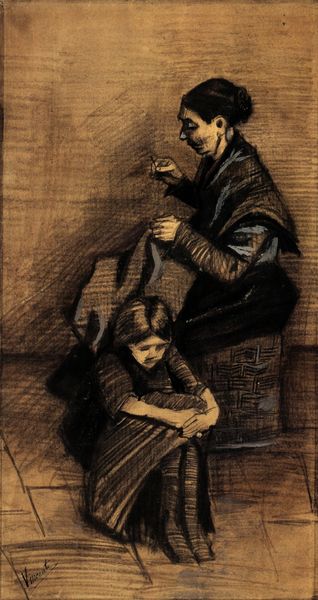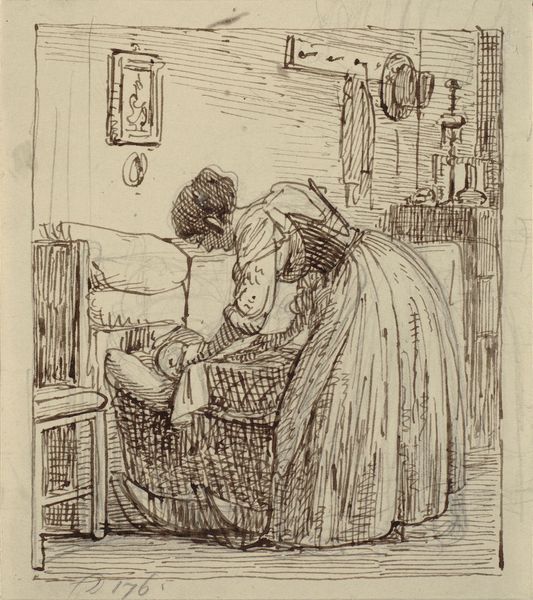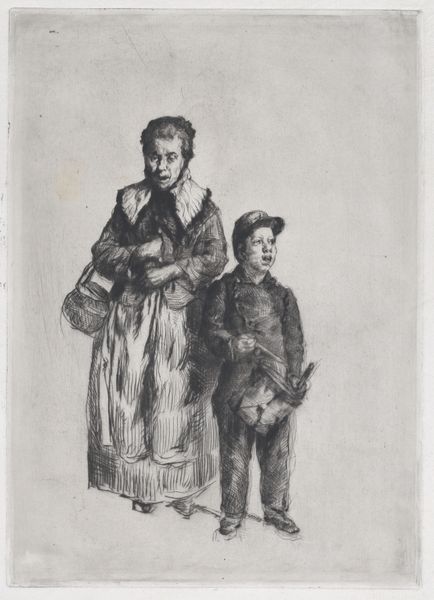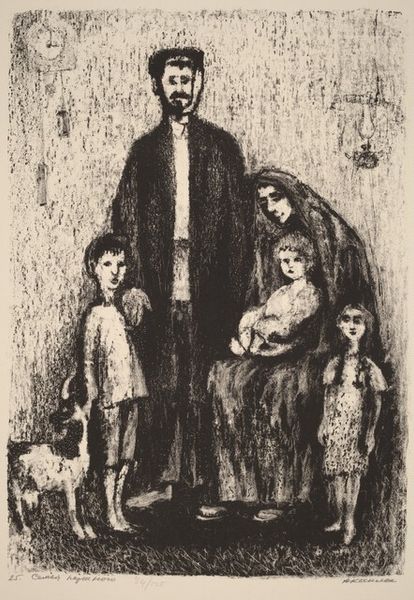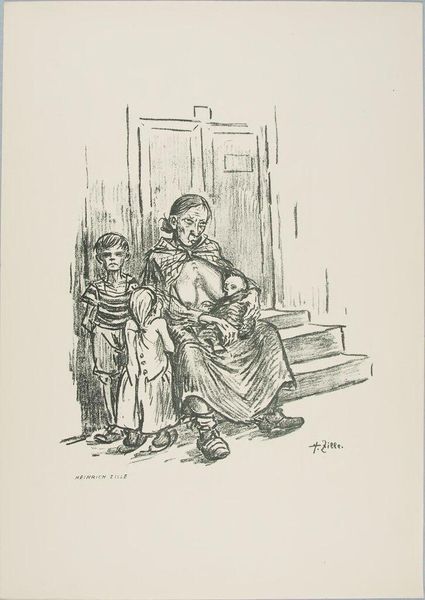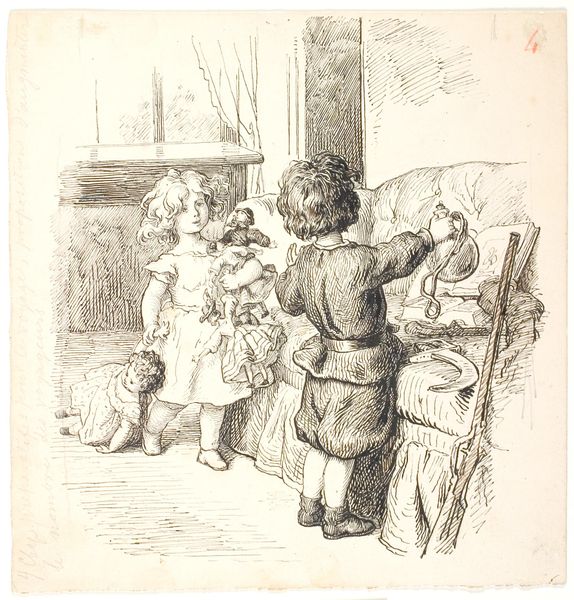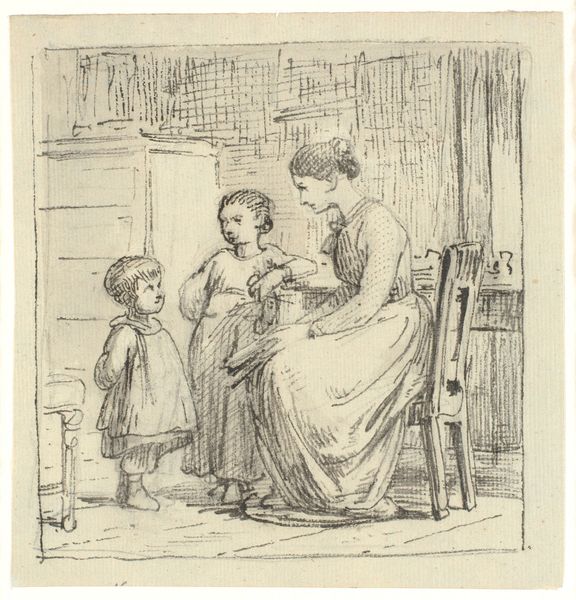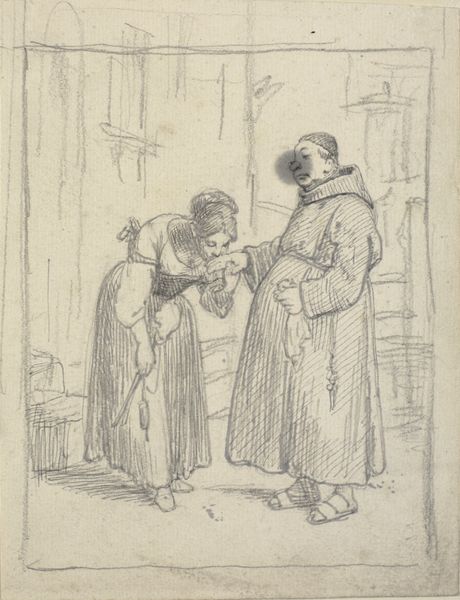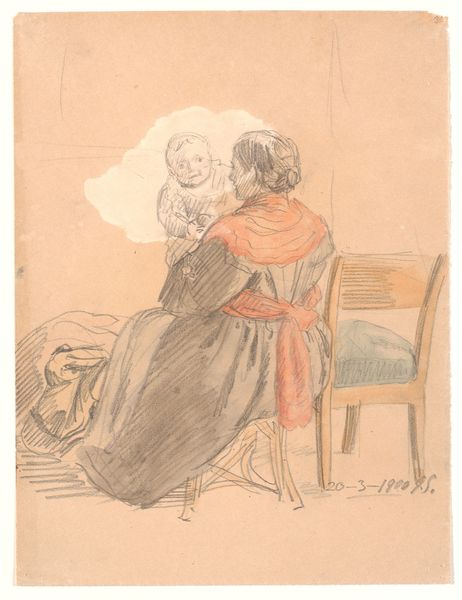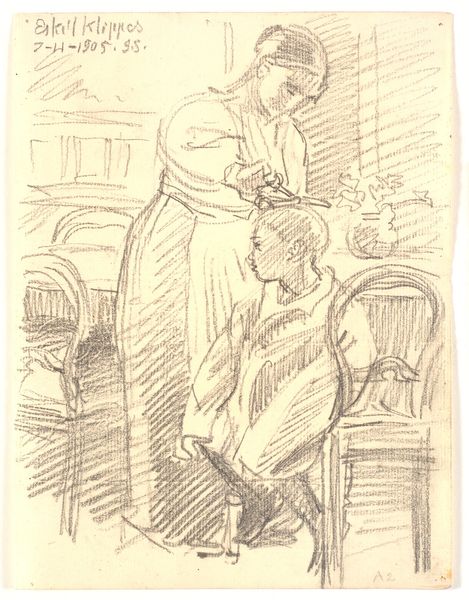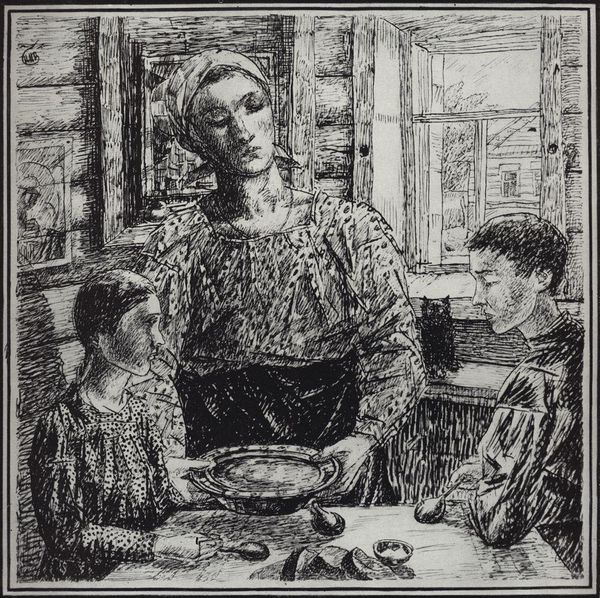
drawing, charcoal
#
drawing
#
charcoal drawing
#
social-realism
#
genre-painting
#
charcoal
#
post-impressionism
#
portrait art
#
realism
Copyright: Public domain
Curator: Vincent van Gogh's 1883 drawing, "Soup Distribution in a Public Soup Kitchen," renders a stark scene in charcoal on paper. The drawing resides here at the Van Gogh Museum. What are your first impressions? Editor: It's immediately heavy, both literally in its stark blacks, but also in the oppressive atmosphere it creates. The light seems to be swallowed, making the figures seem trapped. Curator: Van Gogh's choice of charcoal amplifies that. Charcoal, made from burnt organic matter, reflects the bleak reality he portrays. Consider the directness and economy of this medium – a low-cost material to depict poverty, challenging the elitism often associated with fine art. Editor: Yes, and consider the figures themselves: notice the mother clutching her child, the girl with the downcast gaze and the communal bowl, the elderly woman watching with an air of resigned weariness. Their faces are masks of hardship, universal symbols of suffering, echoing throughout centuries. The steaming soup acts as a paradoxical beacon of hope. Curator: I agree. But what does the simple act of "soup distribution" tell us about social structures of the time? Soup kitchens arose to meet critical material needs of an industrializing, and unequal society. What does it say about who had access to what materials, and what labor was required to distribute even this meager sustenance? Editor: And if we look at it from a psychological lens, we can recognize in these characters the archetype of the "victim," enduring, surviving against immense odds. There is a quiet dignity, even grace, in their postures despite their destitution. It’s the quiet power in those timeless images. Curator: Absolutely. It demonstrates Van Gogh’s sensitivity to laboring class experience and the social determinants of health outcomes for these individuals in their moment, that, sadly, in some ways, echo into the present. Editor: Seeing how symbols transcend their specific context and still hold meaning is powerful. It encourages us to look beyond the immediate appearance and connect with deeper, enduring aspects of the human condition. Curator: For me, reflecting on this piece brings a fresh awareness of what goes into basic acts like eating, highlighting labor, inequality, and resource distribution. Editor: And it allows me to see the timeless symbolism present within the artwork’s composition, enhancing my awareness of human struggles, past and present.
Comments
No comments
Be the first to comment and join the conversation on the ultimate creative platform.
